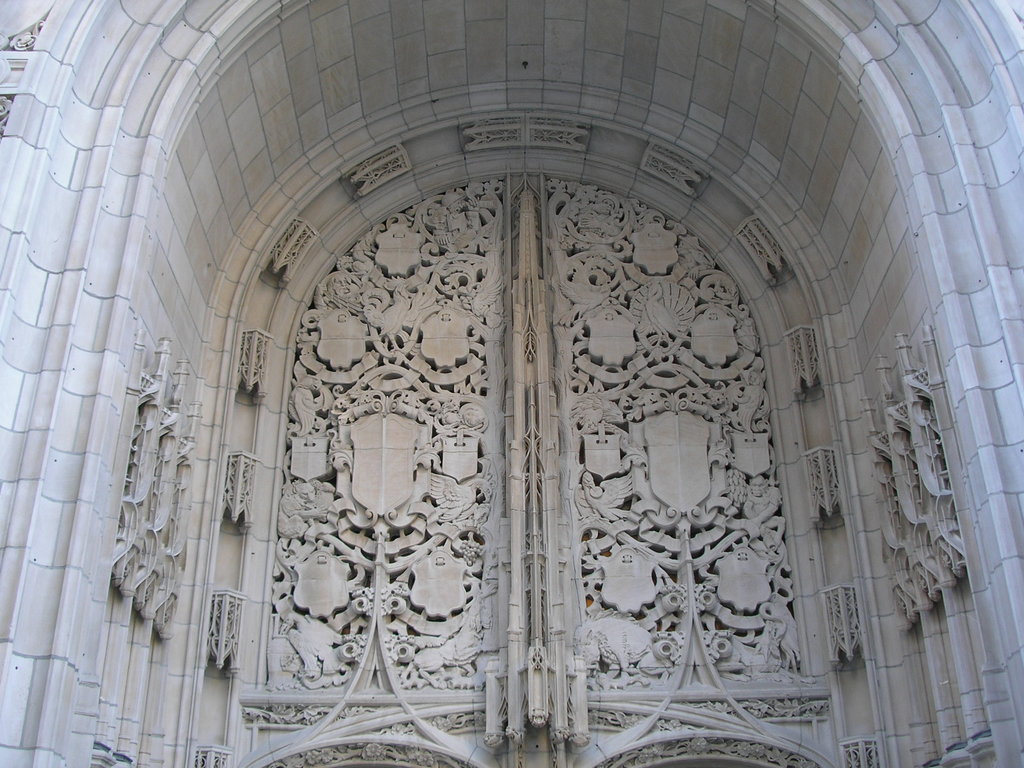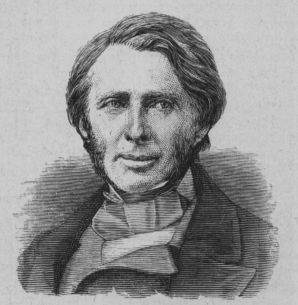| Abbey of Saint Denis - Paris. Believed to be the earliest example of Gothic architecture |
This style is commonly referred to by most as Neo-Gothic. It started in the late 18th century (1760+) in both mainland Europe and England. the architects who chose to design in this style sought to revive old medieval forms.
The original Gothic period was popular from about 1140 (Abbey of Saint Denis in Paris (pictured right)) and it is believed to have reigned almost solely as an architectural style until it died out gloriously in 1520 with the King's chapel (at the time he was Henry VII) at Westminster Abbey in London. Another church famous for its Gothic architecture is the Cathedral of Notre Dame in Paris. Although it gave way to newer, more classical forms, it did not die out completely and survived in on-going projects (this is why it is called the Gothic Survival).
Both styles are basically the same, they are mostly intended for churches as the one main aspect of this style is the grandeur of the buildings. Especially in churches and, later on, in universities, the aim was to make the human feel like a minuscule nothing compared with the Universe and God which was represented by the building itself, I believe that the reason universities chose this same style and still do so to this day, especially in America, is because they want the student to try to live up to the grandeur of the place.
 |
| Gothic detailing on Tribune Tower in Chicago |
What I love most about this style are the lace like details which
you can find in almost each and every example of the period. Some other key
characteristics of these styles were the pointed arches, stained glass and the
icons found in a lot of the churches from this period, tall dizzying spires,
the flying buttresses and of course the ribbed vault.
 |
| Palace of Westminster - designed by A.W.N Pugin |
Two major designers who contributed to this style, were A.W.N Pugin, in England and Eugene Viollet-le-Duc, in France. Pugin was hired as a designer when he was still a teenager and used to mainly provide details from this style to be used by other designers. Eventually, he was hired to design the royal silver and did so from 1828 on-wards. He would later go back to these designs when he would design the Palace of Westminster, more commonly known as the Houses of Parliament in London.
Another Englishman by the name of John Ruskin also contributed to this era by writing two majorly influential works of theory in which he echoed and added to Pugin's ideals. In his book The Stones of Venice Ruskin suggested that no other buildings be as grand as the Gothic pieces because, in his opinion, of the great work and sacrifice the stonemasons did in order to finish the individual pieces of the buildings. Indeed, he had declared the Doge's Palace in Venice "the central building of the world," and thus opened the flood gates for every architect to copy the designs of the palace which he later turned to despise.
Contrary to Ruskin, Viollet-le-Duc, whilst restoring the great Gothic buildings around Paris, removed most of the original stone work, and remade it completely as he believed in a total restoration, so much so that whoever was looking at the piece would not be able to tell whether it was originally built in the middle-ages or more recently.
| A.W.N Pugin |
 |
| Eugene Viollet-le-Duc |
References:
Gothic Revival - New World Encyclopedia. 2013. Gothic Revival - New World Encyclopedia. [ONLINE] Available at:http://www.newworldencyclopedia.org/entry/Gothic_Revival. [Accessed 22 October 2013].
sarahlevin, (2011), Palace of Westminster [ONLINE]. Available at: http://sarahlevin.files.wordpress.com/2011/09/westminster-palace.jpg [Accessed 22 October 13].
Athena Review, (2005), Abbey of Saint Denis [ONLINE]. Available at: http://www.athenapub.com/wfront-P7260004b.GIF [Accessed 22 October 13].
Laura Brooks , (2006), Gothic Detailing [ONLINE]. Available at: http://www.newworldencyclopedia.org/entry/File:Architectural_details_on_Tribune_Tower_(Chicago).JPG[Accessed 22 October 13].
N/A, (2006), A.W.N Pugin [ONLINE]. Available at: http://www.communigate.co.uk/dorset/clhs/phpubHcFq[Accessed 22 October 13].
N/A, (2013), John Ruskin [ONLINE]. Available at:http://upload.wikimedia.org/wikipedia/commons/thumb/3/3e/John_Ruskin_-_Project_Gutenberg_eText_13103.jpg/220px-John_Ruskin_-_Project_Gutenberg_eText_13103.jpg[Accessed 22 October 13].
N/A, (1860), Eugene Viollet-le-Duc [ONLINE]. Available at:http://chateauroquetaillade.free.fr/Anciens/Viollet%20le%20Duc.jpg [Accessed 22 October 13].

No comments:
Post a Comment